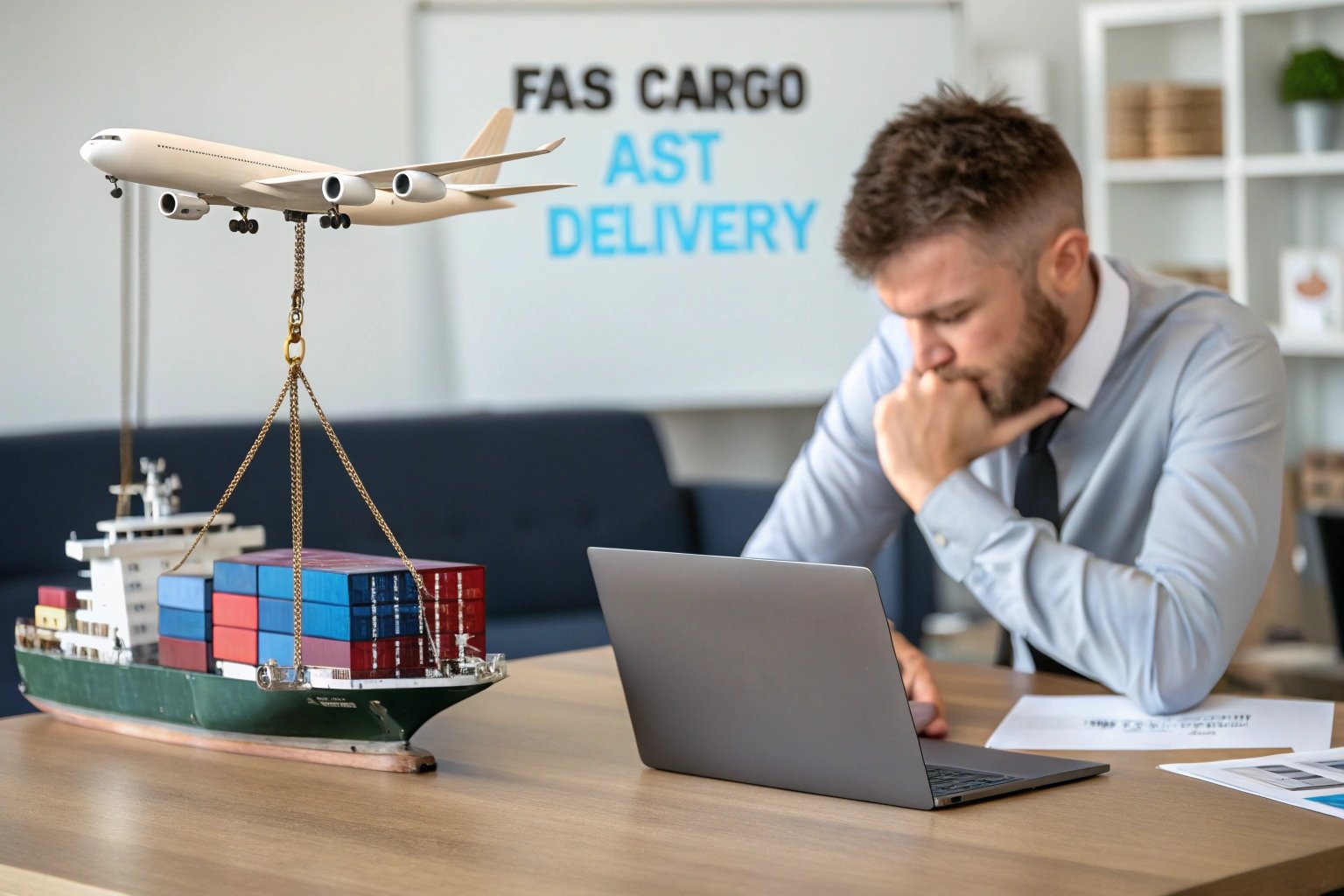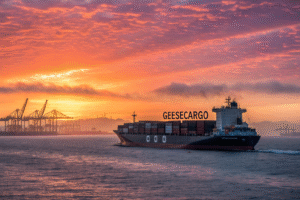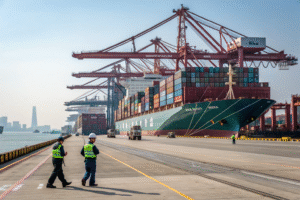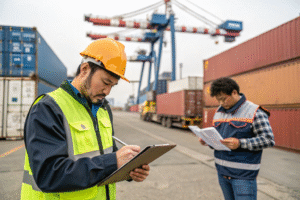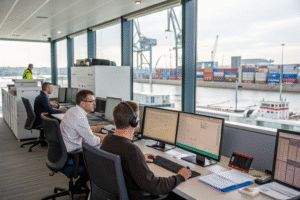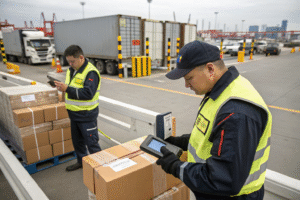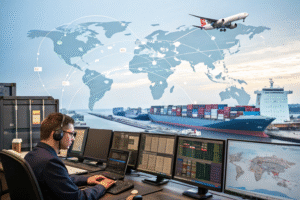Every time you place a factory order, you face the same question — fly it fast or float it slow? The decision isn't always simple, especially when cost, timing, and product value are on the line.
Air freight is faster but more expensive. Ocean freight is slower but cost-effective for large shipments. The right choice depends on your timeline, cargo size, and budget.
Many U.S. businesses shipping from China want both speed and savings — but logistics is about balance. Let me break down the pros and cons so you can make the best call for your supply chain.
Cost comparison between air and ocean freight
The biggest factor in freight decision-making is cost. Many business owners assume air is “too expensive,” but is that always true?
Air freight costs 5 to 10 times more than ocean freight per kilogram. But for lightweight or high-value items, air can still be the smarter choice.
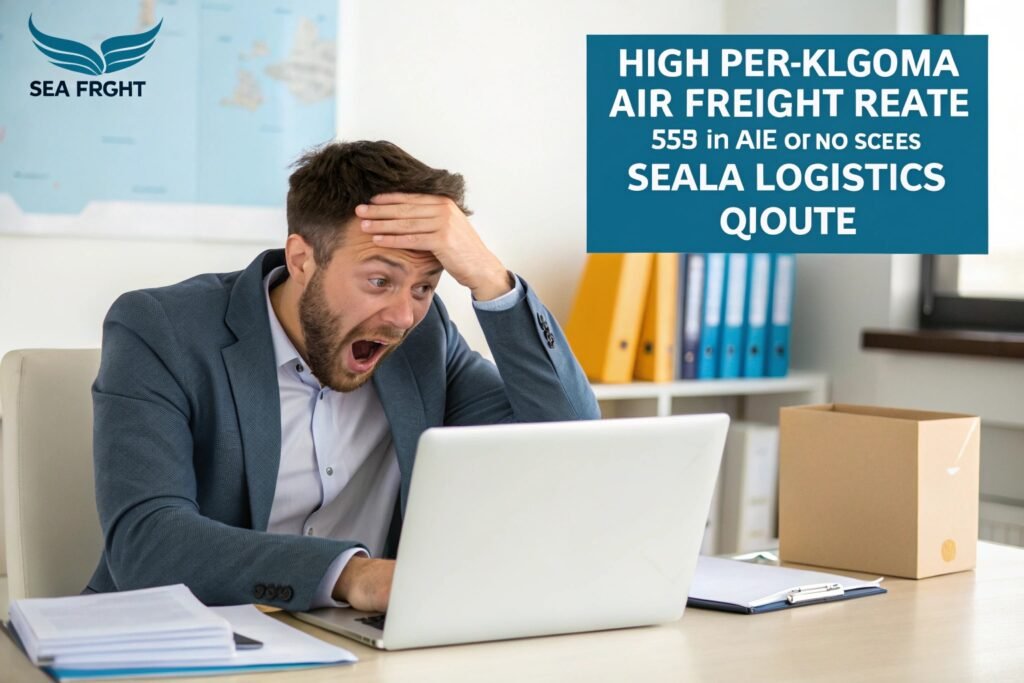
What are the typical rates in 2025?
Here’s a side-by-side cost snapshot for China–U.S. shipments:
| Mode | Estimated Cost | Billing Method |
|---|---|---|
| Ocean Freight | $3,400–$4,800 (40ft container) | Per container |
| Air Freight | $4.5–$8.0/kg (express) | Per kg or volumetric weight |
To visualize:
- Shipping 1,000 kg of light electronics:
- Air: $6,000–$8,000
- Ocean: ~$1,500 (shared LCL)
But for 15,000 kg of garments:
- Ocean FCL will cost around $4,500
- Air would exceed $50,000 — not practical
When does air freight make financial sense?
If you're importing:
- Prototypes or product samples
- Limited-release goods (e.g., holiday items)
- High-value cargo (electronics, medical tools)
- Products with retail urgency
Then air might be worth the premium. One of our U.S. clients flew in Christmas toys in October — the higher freight cost was outweighed by beating competitors to market.
When to choose air freight over sea shipping
Speed is the name of the game when supply chain delays risk lost sales. Air freight becomes an investment — not an expense — when timing is critical.
You should choose air freight when delivery speed is essential, your shipment is small or light, or your business cannot afford supply delays.

What types of cargo are best suited for air?
Here are scenarios where I strongly recommend air:
| Cargo Type | Reason |
|---|---|
| Fashion samples | Need quick review before full production |
| Electronic parts | High value, time-sensitive replacements |
| Urgent restocks | Fast-moving SKUs selling out |
| Seasonal launches | Retail calendar deadlines |
| Medical devices | Regulatory-sensitive, needs quick response |
If your shipment value per unit is high — or your profit depends on speed — go air.
One of our clients in Texas told me that just 2 days of stockout cost them $12,000 in lost Amazon sales. For them, flying restock cargo was not optional.
Are there ways to reduce air freight costs?
Yes. At GeeseCargo, we often suggest:
- Using deferred air (slightly slower, but cheaper)
- Consolidating smaller boxes into one airway bill
- Shipping part by air, rest by sea (split-mode)
- Booking sea-air hybrid routes via Dubai or Korea
These blended options give you speed where it matters, without killing your budget.
Transit times: air freight vs. ocean freight
Speed is the most obvious difference. But how much faster is air freight in real-world delivery times?
Air freight takes 3–7 days from China to the U.S., including customs clearance. Ocean freight typically takes 20–40 days, depending on the port.
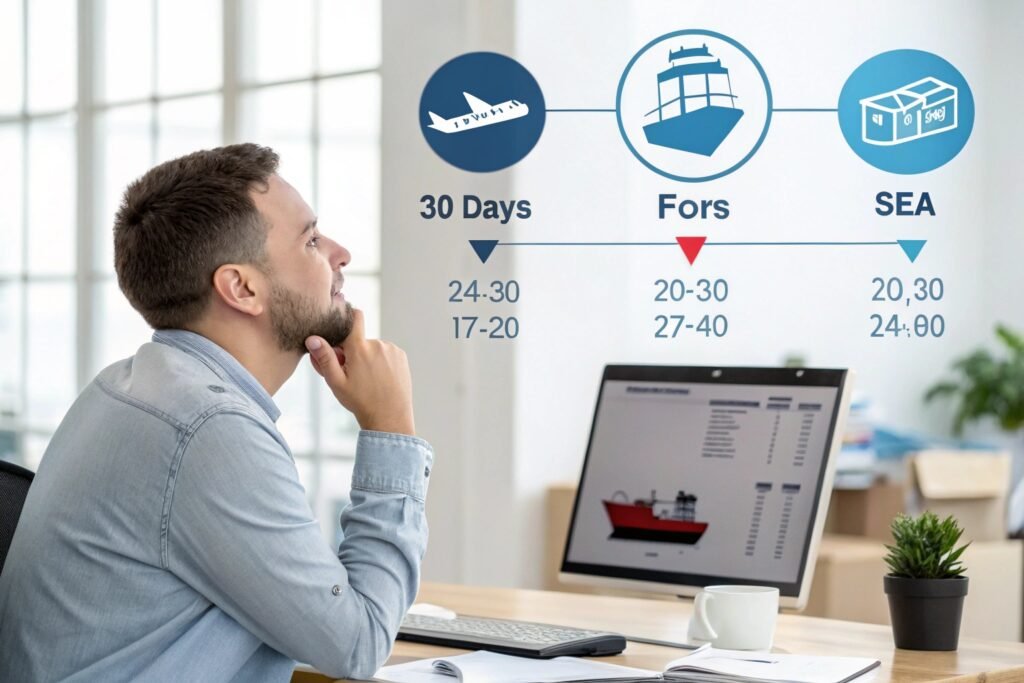
What are the actual timelines from pickup to delivery?
Let’s compare the full door-to-door timeline for a typical shipment:
| Step | Air Freight | Ocean Freight |
|---|---|---|
| Factory Pickup | Day 1 | Day 1 |
| Export Clearance | Day 1–2 | Day 2–3 |
| Transit | 1–3 days | 18–30 days |
| U.S. Customs & Handling | Day 4–6 | Day 30–35 |
| Final Delivery | Day 5–7 | Day 35–45 |
So for urgent delivery, air can be 4–6x faster.
We once helped a San Diego buyer receive samples in 4 days via air. The ocean option would have taken 32. That time savings helped them launch early and beat 4 competitors in the same category.
What slows down air or sea freight?
Even air has risks:
- Airport security inspections
- Airline capacity shortages
- Bad weather (especially during monsoon season)
For sea, common delays include:
- Port congestion
- Customs clearance issues
- Holiday season backlogs
That’s why planning is key. We at GeeseCargo check sailing schedules and airline space availability weekly for all ongoing client projects.
Pros and cons of air vs. ocean freight logistics
It’s not just about price and speed. Logistics reliability, cargo type, customs, and risk exposure all play into the equation.
Air freight offers unmatched speed and lower damage risk, while ocean freight delivers scale and savings. Choosing the right method depends on your business model.

What are the real-world pros and cons of each mode?
Here’s the summary we provide to every new client:
| Feature | Air Freight | Ocean Freight |
|---|---|---|
| Speed | ✅ Fastest (3–7 days) | ❌ Slow (20–40+ days) |
| Cost | ❌ Expensive | ✅ Cheapest per kg |
| Risk of Damage | ✅ Lower | ❌ Higher (more handling) |
| Volume Handling | ❌ Limited | ✅ Best for bulk |
| Customs Speed | ✅ Faster | ❌ More prone to delays |
| Flexibility | ✅ Great for small urgent cargo | ❌ Limited routes and cutoffs |
| Eco Impact | ❌ High emissions | ✅ Lower CO₂ per kg shipped |
At GeeseCargo, we help clients switch modes when market conditions change. For example, during the 2024 container shortage, many switched from FCL to air — but only for top-selling SKUs.
Can you combine both modes?
Yes — it’s called multimodal freight. We’ve helped clients:
- Ship samples by air, bulk by sea
- Launch small lots by air, restock later by ocean
- Use air-sea routes for mid-speed, mid-cost deliveries
This layered approach helps maintain product flow and cash flow — a perfect balance.
Conclusion
Choosing between air and ocean freight isn’t about picking the cheapest or fastest. It’s about choosing what fits your business goals today — and adjusting when those goals change. A good freight partner like GeeseCargo will help you make that decision with clarity and confidence.
